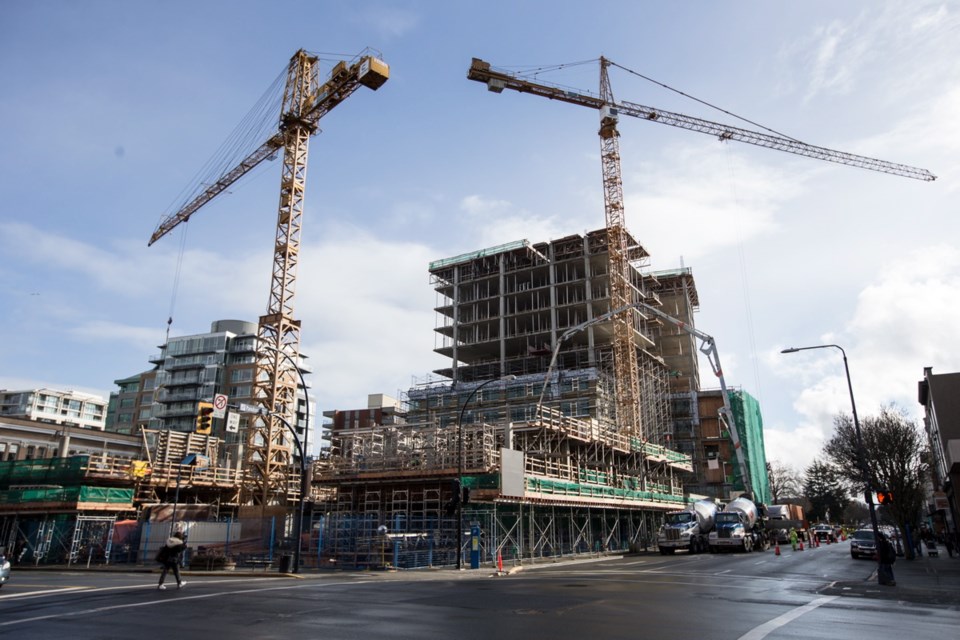Greater Victoria’s new unemployment rate is the lowest in the country now that it has dropped to a level not seen in nine years.
The capital region’s unemployment rate in March was 3.8 per cent, compared to 4.4 per cent in February.
Second place went to Quebec City with 4.1 per cent, followed by a tie between Vancouver and Brantford, Ont., at 4.7 per cent.
B.C. continues to have the lowest unemployment rate of all provinces at 5.4 per cent, although it was up from 5.1 per cent in February, Statistics Canada said in its monthly labour market report released today. The national rate is 6.7 per cent.
Greater Victoria has not seen a rate of 3.8 per cent since Dec. 2008.
It was even lower earlier in 2008 when it stood at 2.8 per cent in May. Unemployment started climbing after the recession hit that year.
Before the economic downturn, wages climbed for in-demand trades, such as crane operators. Some employers tried to poach workers from other construction sites with the lure of more money.
Phil Venoit, president of the Vancouver Island and District office of the B.C. Building Trades, said poaching is not happening at this time.
But the region is moving toward a stronger construction sector, although there is still a “good chunk of unemployment” among members, he said.
“Things are starting to ramp up around the city, so it is positive,” he said, pointing to major office and multi-family projects underway, plus the upcoming $765-million sewage treatment plant.
Employment in the capital region’s construction sector rose to 15,600 in March, from 12,100 the same month a year ago — an increase of 28 per cent, a Statistics Canada official said.
Building permits taken out in Greater Victoria in February fell by 37.2 per cent to $77.8 million from 124.7 million in Feb. 2016. However, those figures reflect only what happens in one month, not the overall construction activity underway in a particular region.
Finance, insurance, real estate and leasing experienced a 33 per cent leap in jobs year-over-year to 10,400 from 7,800.
Public administration jobs climbed by 26 per cent to 20,800 from 16,500.
Business, building and other support services also saw a 26 per cent boost, to 9,600 last month from 7,400.
There were few job categories with major losses. Education dropped by 17 per cent to 12,800 in March, down from 15,400 the same month in 2016.
Greater Victoria’s technology sector has been performing well and job numbers slipped somewhat year-over-year to 18,100 from 19,600.
Increases were seen in both full-time and part-time work.
The number of people working full-time in the capital region moved to 143,400 in March from 137,900 in the same month in 2016, the Statistics Canada official said.
Part time employment climbed to 46,200 from 41,500 in that time.
Another bright spot was the increase in youth (15 to 24 years old) employment in Greater Victoria as numbers rose to 31,100 last month, from 26,200 the year before.
Employment in the 25 to 54 year old age group climbed to 119,000 from 112,900 year-over-year.
There was a slight drop in the 55-year-old and up category with 38,700 working last month, down from 40,300 a year ago.
Brian Yu, deputy chief economist in B.C. for the Central 1 Credit Union, said, “B.C.’s labour market maintained a positive trend through March but showed mild signs of deceleration with slower employment growth and a slight uplift in the unemployment rate.”
Total provincial employment rose by 0.2 per cent from February, Yu said.
The medium trend forecast “sill points to a strong pace of hiring in B.C.,” he said.



